
Italian boot manufacturer Scarpa quickly followed up the introduction of the dual density Matrix in 2003 with the Spirit 3 in 2005. A fairly rapid product cycle for two boots that seem to fill a similar space. We have had both boots on test, the Matrix has completed over 100,000 vertical meters and the Spirit 3, 50,000 meters last season.
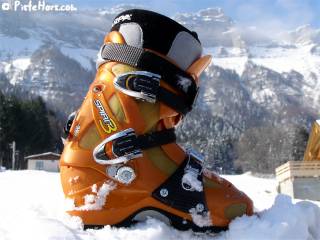
Scarpa Spirit 3
Both boots are a standard three clip design with Dynafit binding inserts and both come in orange. In the case of the Matrix it was a kind of translucide android flesh colour whereas the Spirit has perhaps a more traditional tangerine tinge. To save weight but remain stiff the boots use dual-injected Pebax and come with lightweight heat mouldable liners. Heavier, Cordura “rental” liners are also available. Both boots are compatible with Dynafit bindings.
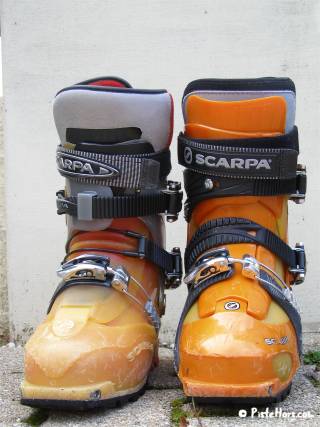
Weight wise there is not a lot between the two boots with the Spirit continuing the recent trend to heavier designs. A pair weighs in a shade under 100 grams (3.5 oz) more. Standing the boots side-by-side the first thing you notice is that the Matrix is noticeably shorter, in particular the spoiler. The front clip on the Spirit uses Scarpa’s inside-outside system and this does give a firmer hold on the forefoot.
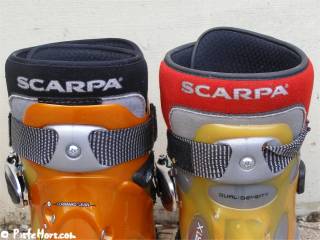
On skis the Spirit is definitely a stiffer more performant boot better able to keep a tight reign on freerando skis such as Atomic’s excellent Snoop Daddy. The very trick exoframe like shell really does deliver the goods with only a small weight penalty. The Matrix is much more of a traditional ski touring boot, a refinement of the Laser. The more complicated shell of the Spirit adds to the cost. The Spirit can be further stiffened by changing the tongue for the that of the Tornado’s.
The inner boots are essentially the same. Our Spirit came with a reinforced cuff which wasn’t present on the first models of the Matrix and again adds something to the stiffness of the boot. When we talk about stiffness don’t get the impression that these are hardcore pro-boots. They are still soft compared to alpine racing boots. Scarpa have previously had a reputation for fitting larger feet. In order to appeal to a wider range of skiers the foot box of the Spirit has less volume. If you found the Matrix a good fit you may not find the same with the Spirit, or you may have to go up a size.
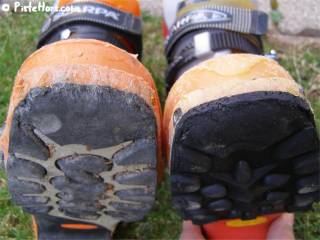
Spirit 3 and Matrix soles
Quality wise the Spirit’s Vibram® sole is thinner and noticeable less robust. In the photo the Matrix has covered over 100,000 vertical meters while the Spirit has just 50,000 meters under its toes but the Matrix sole, despite a lot of approach marches, is in better shape. This problem has been echoed across the bulletin boards and if you are using “alpine” style touring bindings such as Diamir’s or Naxos wear could be a worry. The Spirit does give better grip on snow; perhaps it uses a softer rubber compound? However when the going gets icy you will normally be fitting crampons. The ankle strap is also a bit short.
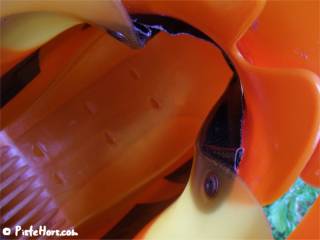
Aggressive rivets
Both shells have some quality problems. The decals on the Matrix fell off after the first scrape with moisture. Thankfully Scarpa removed the rubbish three position: tour, ski, soft switch after the first season. The waterproofing patches supplied with both boots are ineffective, better use Duct tape. The Spirit has two rivets that hold a flexible skirt onto the tongue; these are difficult to cover with tape and quickly wore through the inner boot. A design problem.

In summary the Spirit 3 doesn’t entirely supersede the Matrix. The fit is different. If you have good technique you may not need the extra control that the Spirit offers. The Spirit 3 is less comfortable if you are doing a lot of climbing. More of a freerando than a ski touring boot. It is much harder to see where the Spirit 4 and Spirit fit into the mix. Unless you prefer green.
Scarpa Spirit 3
Scarpa Matrix
New Scarpa Ski Touring Boots
Scarpa Beefs Up Ski Boots